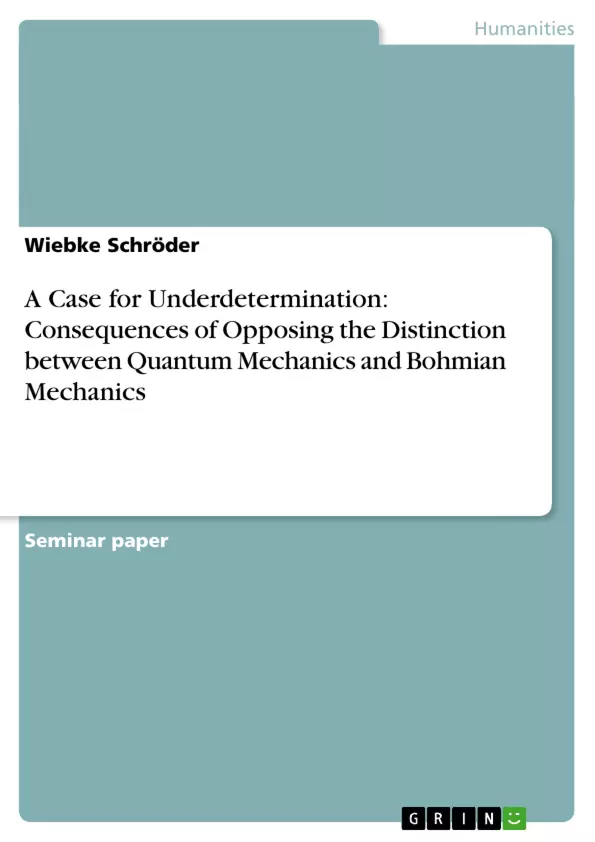In his article Must Evidence Underdetermine Theory? John D. Norton attempts to refute a certain version of the underdetermination thesis. He attacks the idea that all evidence necessarily underdetermines any scientific theory. In the first part of this paper, I want to call into question part of his argument in some general terms and then focus on a particular case of possible underdetermination, namely Quantum mechanics (QM) and Bohmian mechanics (BM), in order to strengthen my criticism of Norton. Norton himself does not take sides in the debate over the question whether or not QM and BM are essentially the same theory, but says the possibility that they are cannot be ruled out. I will show that Norton, both in his general argument as well as in his judgment in the ‘QM/BM case’, takes a certain notion of theory for granted that his opponents would not agree with. In addition, I will investigate further consequences resulting from his position. This part makes up the bulk of my paper. In a second part I attempt to refute Norton on his own grounds. That is, on the basis of his idea of what a theory is, I will show that one can preclude the possibility that QM and BM are the same theory. To be clear: This paper is not a defense of the underdetermination thesis, but rather a critique of Norton’s attack.
Inhaltsverzeichnis (Table of Contents)
- Introduction
- Part I
- Norton's line of argument and my criticism thereof
- QM and BM. What they share and what they don't
- Empirical content
- Ontology
- Mathematical Structure
Zielsetzung und Themenschwerpunkte (Objectives and Key Themes)
This paper aims to critique John D. Norton's argument against the underdetermination thesis, focusing on the example of Quantum Mechanics (QM) and Bohmian Mechanics (BM). The paper explores the implications of Norton's position by questioning his definition of theory and analyzing the differences between QM and BM.
- Underdetermination thesis and its refutation by Norton
- Comparison and contrast of QM and BM
- Ontology and its role in defining theory
- Empirical content and observational equivalence of QM and BM
- Probabilistic nature of QM and the deterministic nature of BM
Zusammenfassung der Kapitel (Chapter Summaries)
- Introduction: This section introduces the topic of the paper, which is a critique of Norton's argument against the underdetermination thesis. It highlights the paper's focus on the case of QM and BM and the specific criticisms it will raise.
- Norton's line of argument and my criticism thereof: This section examines Norton's argument against the underdetermination thesis, specifically his claim that observationally equivalent theories are likely to be theoretically indistinguishable. The author argues that Norton's conclusion relies on a narrow definition of theory that excludes ontological structure, leading to an incomplete analysis.
- QM and BM. What they share and what they don't: This section provides an overview of the similarities and differences between QM and BM, focusing on their empirical content, ontology, and mathematical structure. The author highlights the distinct ontological differences between the two theories, emphasizing the inherent indeterminism in QM and the deterministic nature of BM.
Schlüsselwörter (Keywords)
The paper focuses on the underdetermination thesis, quantum mechanics, Bohmian mechanics, ontology, empirical content, theoretical indistinguishability, observational equivalence, and the concept of theory. The author explores the implications of contrasting QM and BM, highlighting the differing interpretations of probability and the philosophical implications of their distinct ontological approaches.
- Quote paper
- Wiebke Schröder (Author), 2011, A Case for Underdetermination: Consequences of Opposing the Distinction between Quantum Mechanics and Bohmian Mechanics, Munich, GRIN Verlag, https://www.grin.com/document/211422



